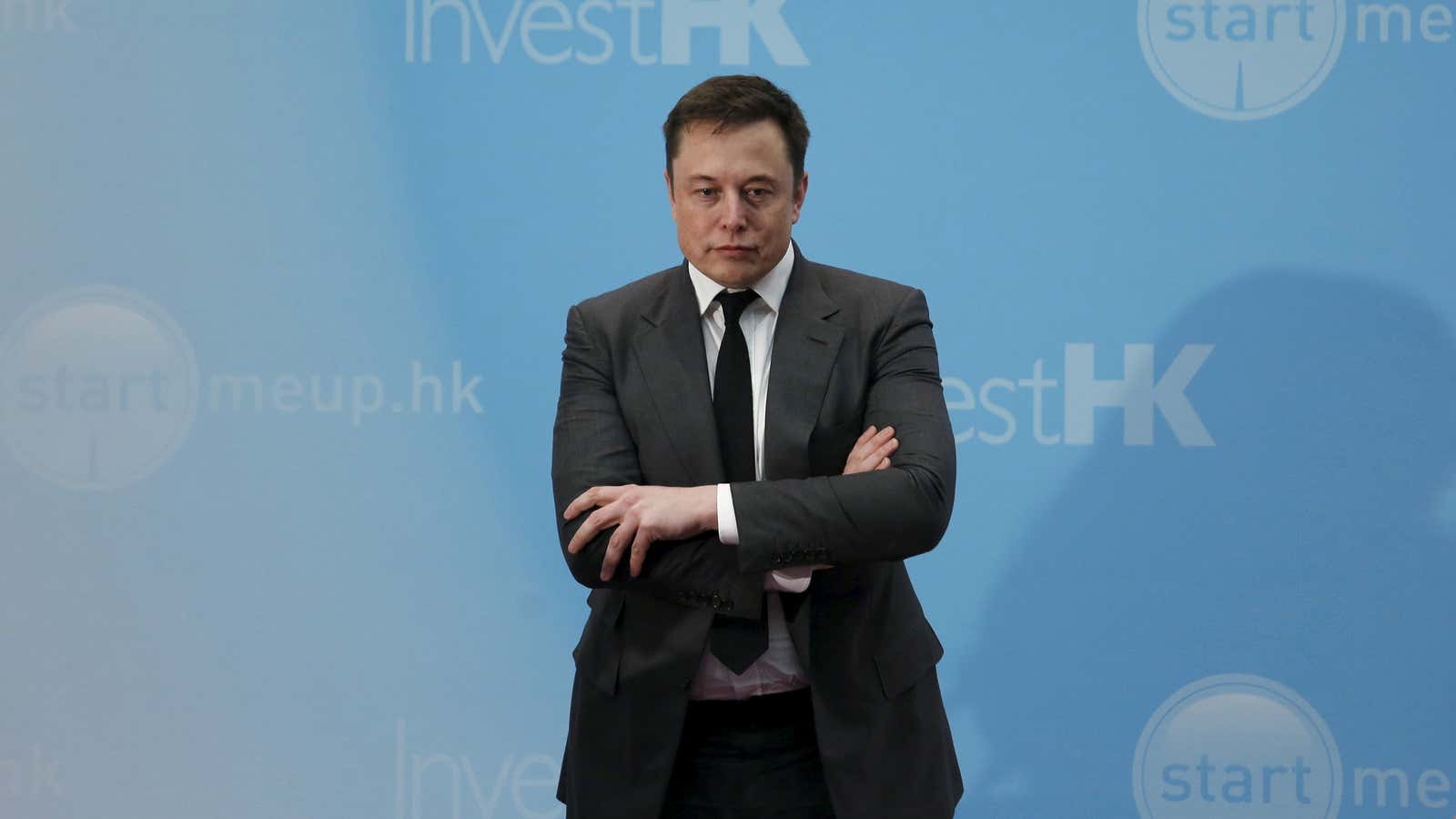It’s been a rough summer so far for Elon Musk. The Tesla CEO is facing scrutiny from US regulators after a driver died using a Tesla vehicle’s mostly hands-free autopilot mode. His company’s investors, meanwhile, are skeptical of his June acquisition of SolarCity, a cash-burning company owned by Musk’s cousin.
Tesla hid more bleak news right in the thick of the Independence Day weekend in the US. The company quietly announced yesterday (July 3) it missed its delivery targets for the second quarter by about 15%.
A note to investors states that Tesla delivered 14,370 vehicles to customers from April to June, below its own forecast of about 17,000. That marks the second consecutive quarter wherein the company has missed its delivery targets. In the three-month period ending in March, the company expected to deliver 16,000 vehicles to customers, but only delivered 14,820.
Tesla blames the missed forecast on production challenges. The company claims that it has over 5,000 vehicles in transit that have yet to be delivered to customers. (Tesla only counts a vehicle as “delivered” once it reaches a customer’s hands.) Scaling up its production and efficiency in order to keep up with demand is challenging for the company, which in one year sells a fraction of what its larger competitors sell in a single month.
These production challenges will likely continue plaguing Tesla. As was the case last year, the holiday season will probably lead to a bump in sales, which will only increase pressure on production.
Deliveries during the second half of the year will have to be 60% higher than the first half if the company is to reach the low end of its full-year forecast of 80,000 to 100,000.
Tesla will also face changes in the ratio of models it’s producing. Sales for the Model S sedan decreased 22% quarter-on-quarter, while demand for the Model X increased. The company will also have to prepare to manufacture hundreds of thousands of units of the new mass-market Model 3, which is set to hit the market in 2017. This will require tweaking its existing manufacturing infrastructure.
Will investors quiver at the missed targets? The company’s financial backers have been known to support Musk through thick and thin, hoping that the CEO’s grand vision for eradicating gas emissions becomes a reality. As long as demand remains strong, there’s hope Musk can continue to persuade investors to provide financial support, which he can use to manage tricky production issues.
But the company’s burn rate—an average of $517 million per quarter—appears to have led some to feel impatient. The company’s stock price has dropped 22% in the past year. Competitors to the mass-market Model 3 look set to hit the market quickly. GM’s Bolt went on sale in January. While it doesn’t have the sex appeal of a Tesla, GM can more nimbly overcome production issues than Tesla, which means consumers can get one much faster.
Selling both investors and consumers on Musk’s long-term vision for the company will be crucial to sustaining Tesla through these growing pains.
